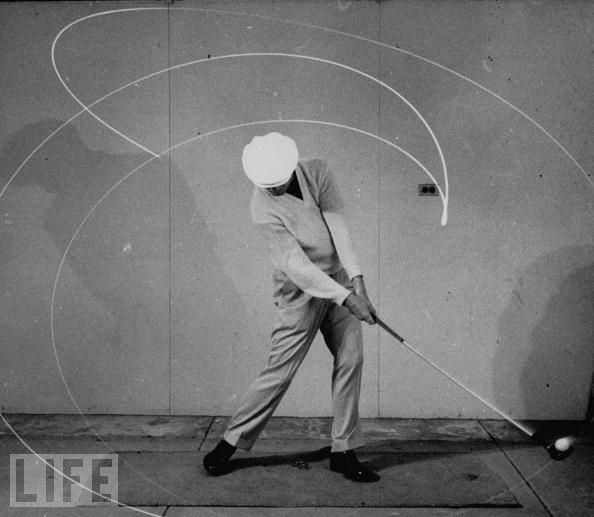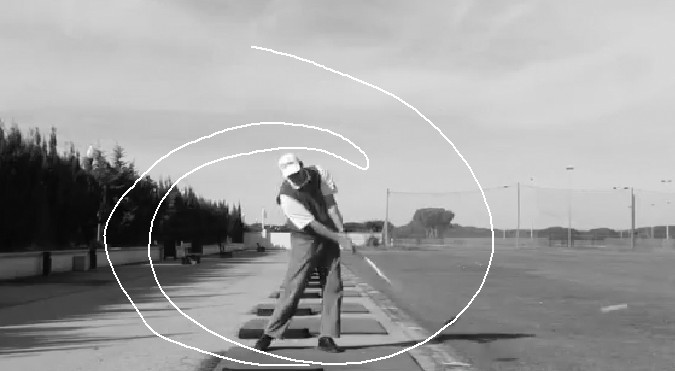There always seems to be confusion about loading…
First, for clarification, you have the four types of loading on the backswing. (cocking the wrists)
- Sweep, set the hands as fast as possible
- Random sweep, gradually cock the wrists on the backswing.
- Snap, Delay the wrist cock until the very end of the backswing.
- Float, Never cock the wrists, but then cock them on the way down.
To further confuse the TGM readers, you have drive, and lag loading.
Drive and lag loading only refer to the forces that are applied to the shaft itself on the downswing only.
Drive loading is exclusively for hitters.
Lag Loading is for swingers.
When the change of direction happens, the shaft is further loaded into the pressure points… the shaft moves inward, closer to the body, and this compression is actually centripetal force… and does
create additional float loading of the wrist… this is very true.
Now, this is the where the yellow brick road splits into two paths.
For a full shot, the swinger want to stress the shaft as much as possible with a quick change in direction, maximum compression,
then let all that stored energy “dump” into the ball… it’s the sling shot, the rubber band effect. Any additional attempt at acceleration
on the downswing spells DISASTER! You pop the clutch with the body, then coast it into impact… monitoring and guiding it on the way down with those educated hands. (Butt end of the club first… this is NOT throwing the hands from the top with a quick acceleration)!!!
The hitter wants no part of a quick change in direction. The transition must be slow then accelerate, AcceLerate, ACCELERATE! with the holy grail being to hold the flex of the shaft all the way to the ball.
Two completely different intentions… you cannot do both at the same time…
Pick your poison carefully!

